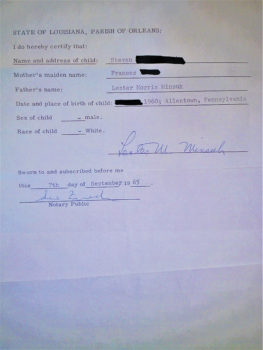 The “White Paper”
The “White Paper”
Les Minsuk and Mary Thomas
PebbleCreek homeowner, Les Minsuk, recently recalled a story from his family’s experience in the American South in the 1960s. He shared the story with two Comity Advisors, Roberta Medina and Mary Thomas.
In 1965, Les, a chemical engineer who received his college degree in 1957 from Cooper Union in New York City, received a field assignment in New Orleans, Louisiana. The building of a major facility for manufacturing liquid oxygen was underway. Les, his wife, and two young children arrived in June.
In September, Hurricane Betsy hit Louisiana and Florida. It was the costliest hurricane at the time and resulted in 81 deaths—most in Louisiana. Although Les, his family, and their home were saved from the worst effects of the hurricane because their apartment building was on high ground, Hurricane Betsy nearly destroyed the plant at which Les was working. As a result, he needed to remain in New Orleans longer than expected to work on the repair of the plant. Consequently, he had to arrange for his five-year-old son to enter kindergarten in the New Orleans public schools.
When Les went to register his son for school, he produced his son’s birth certificate and proof of immunization. Upon presenting his son’s birth certificate to the clerk, she said there was a problem. His son’s birth certificate, issued in Pennsylvania, did not indicate his son’s race. Les explained that Pennsylvania did not list the race on a birth certificate. Les told the clerk that his son was white and asked why it was necessary to have proof of his child’s race. Les pointed out that schools had been legally desegregated, so having proof of his son’s race seemed irrelevant.
The clerk pointed out that desegregation was forced on Louisiana’s public schools. She explained that established procedures remained in place so that when segregation came back, it would be possible to impose it again. Although Les was stunned and in disbelief, he remained calm and asked what he had to do to provide proof of his son’s race.
Les was told he had to go to a notary and swear an oath that his son was white as were Les and his wife. Les explained the requirement to his wife and son who accompanied him to the notary.
Les’ son asked, “Why do they do that?”
Les explained that this was the way they do things in the south.
Les returned to the registration clerk with the notarized document verifying his son’s race. After the registration clerk entered the information about his son’s race, Les asked for the document back. The clerk gave him the document and asked why he wanted it back.
Les said, “When I get back to the United States and tell this story, no one will believe it.”
Les felt then, and still feels today, a palpable contempt for Louisiana and the policies of the Jim Crow south. Les has kept this document and refers to it as his “White Paper.”
